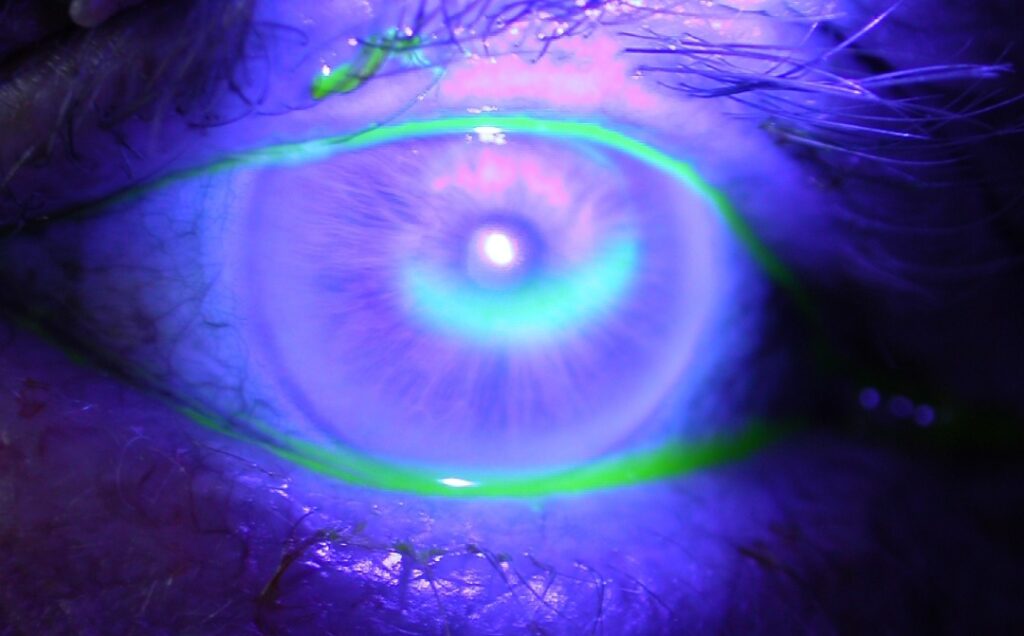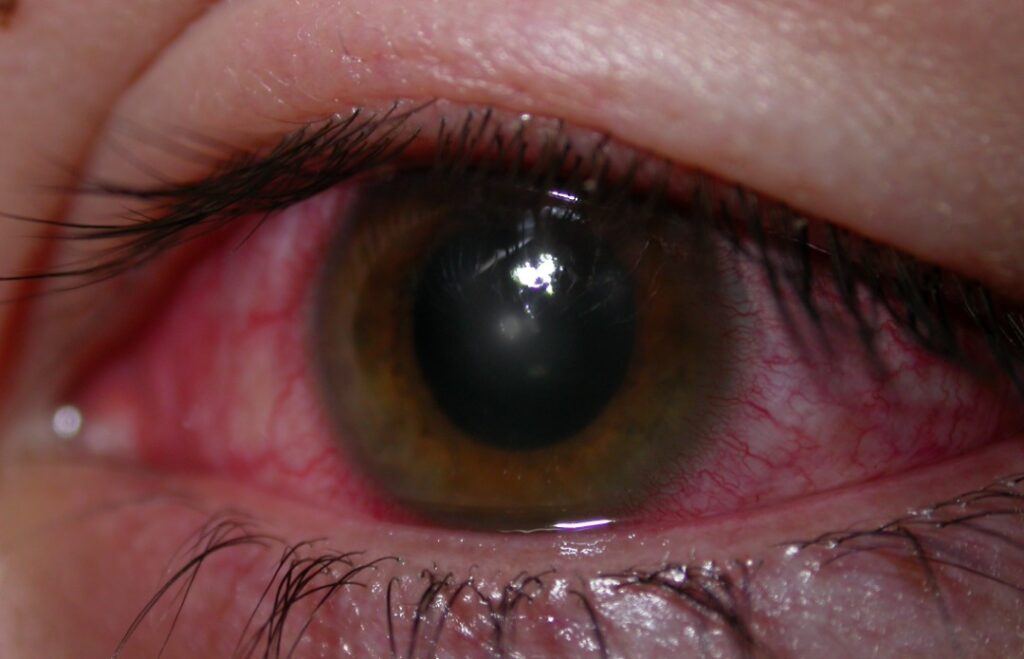The surface of the eye is the most sensitive surface of the body. Any soreness or scratch to the surface can be very painful. Even minor scratches are often so painful that grown men cannot open their eye without anaesthetic drops. Fortunately, minor scratches heal within days, and leave no discernable scar. A scratch to the eye may require some antibiotic cover whilst it is healing to prevent infection.
Whilst most corneal abrasions heal perfectly and rapidly, some corneal abrasions can heal poorly, particularly if the abrasion is caused by Yucca plant leaves or fingernails. These abrasions can recur spontaneously days to months latter without warning. A recurrent erosion gives the same painful sensation as the original abrasion, but without the preceding trauma. This is called recurrent corneal erosion syndrome. This may occur several times throughout the year. Initially it is treated with antibiotics, with or without a bandage contact lens. These scratches may need to be debrided in clinic to help them heal effectively, or even cleaned in an operating theatre with alcohol to give them a fresh substrate in which to heal over.
The main danger with scratches is that the scratch can become infected. If this occurs the normally clear cornea will develop a white opacity and the pain will get worse and worse. This is a medical emergency and needs to be seen by an ophthalmologist the same day to prevent serious sight threatening loss of vision. Most eye units have dedicated eye casualties that you can call for an urgent appointment.

Corneal abrasion – can only be visualised with a slit-lamp microscope or with a specialised fluorescent dye called fluorescein. This is a yellow dye that fluoresces green with blue light. This patient had a chemical burn from a tonometer, used to check eye pressure.
Contact lens related corneal ulcer – note opacity centrally

